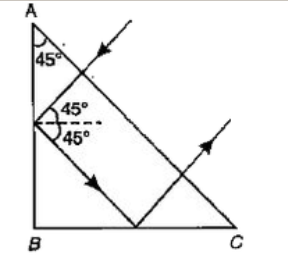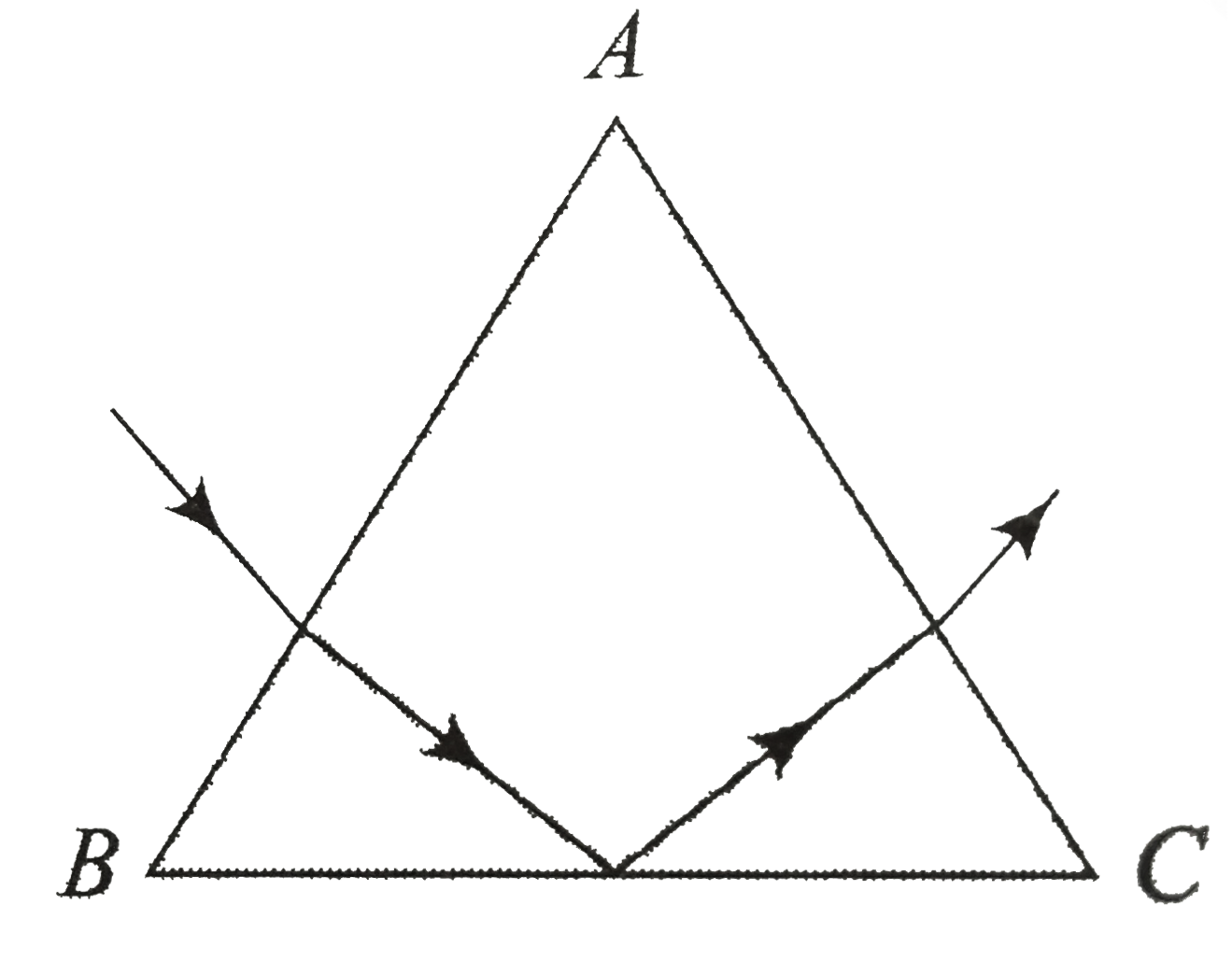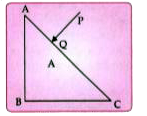A ray of light falls on an equilateral prism ABC as shown. Face AC of the prism is polished.

Calculate 'mu' when the ray falls on BC after reflecting from AC it make angle 60 with it .With the value of μ calculated above find total deviation, when the ray of light finally emerges from BC
120∘
180∘
150∘
90∘
The correct Answer is:C
Step by step video & image solution for A ray of light falls on an equilateral prism ABC as shown. Face AC of the prism is polished. Calculate 'mu' when the ray falls on BC after reflecting from AC it make angle 60 with it .With the value of mu calculated above find total deviation, when the ray of light finally emerges from BC by Physics experts to help you in doubts & scoring excellent marks in Class 11 exams.
Topper's Solved these Questions
- BOOK - DC PANDEY ENGLISHCHAPTER - RAY OPTICSEXERCISE - Matrix matching type Q.8videos
RAY OPTICS
- BOOK - DC PANDEY ENGLISHCHAPTER - RAY OPTICSEXERCISE - Integer type q.14videos
RAY OPTICS
- BOOK - DC PANDEY ENGLISHCHAPTER - RAY OPTICSEXERCISE - B. More than one option is correct20videos
RAY OPTICS
- BOOK - DC PANDEY ENGLISHCHAPTER - PROPERTIES OF MATTEREXERCISE - Integer8videos
PROPERTIES OF MATTER
- BOOK - DC PANDEY ENGLISHCHAPTER - ROTATIONEXERCISE - (C) Chapter Exercises39videos
ROTATION
Similar Questions
A ray of light falls on an equilateral prism ABC as shown. Face AC of the prism is polished.

What is the refractive index μ of the material of the prims so that when the ray falls on face BC (after reflecting from AC) it makes an angle 60∘ with it.?View SolutionA ray of light falls on a right angled prism ABC (AB=BC) and travels as shown in figure. What is the refractive index of material of the prism ?
 View Solution
View Solution
Knowledge Check
- Question 1 - Select One
A total reflecting equilateral prism can be used to deviate a ray of light through :
A30∘B60∘C75∘D90∘
A ray of light falls on a normally on a refracting face of a prism. Find the angle of prism if the ray just fails to emerge from the prism (μ=3/2).
View SolutionThe path of a ray of light passing through an equilateral glass prism ABC is shown in figure. The ray of light is incident on face BC at the critical angle for just total internal reflection. The total internal reflection. The total angle of deviation after the refraction at face AC is 108∘. Calculate the refractive index of the glass.
 View Solution
View SolutionA ray of light incident on an equilateral triangular glass prism of μ=√3 moves parallel to the base of the prism inside it. What is the angle of incidence for this ray ?
View SolutionA ray of light incident at an angle 90° with the face of an equilateral prism passes symmetrically. Calculate the refractive index of the material of the prism
View SolutionA ray of light passes through the equilateral prism such that angle of incidence is equal to the angle of emergence if the angle of incidence is 45∘. The angle of deviation will be
View SolutionA ray of light PQ is incident normally on the hypotenuse of a right angled prism ABC as shown in the diagram given below:
What is the value of the angle of deviation of the ray ?
 View Solution
View SolutionA ray of light falls on a glass plate of refractive index μ=1.5.
What is the angle of incidence of the ray if the angle between the reflected and
refracted rays is 90∘?View Solution

